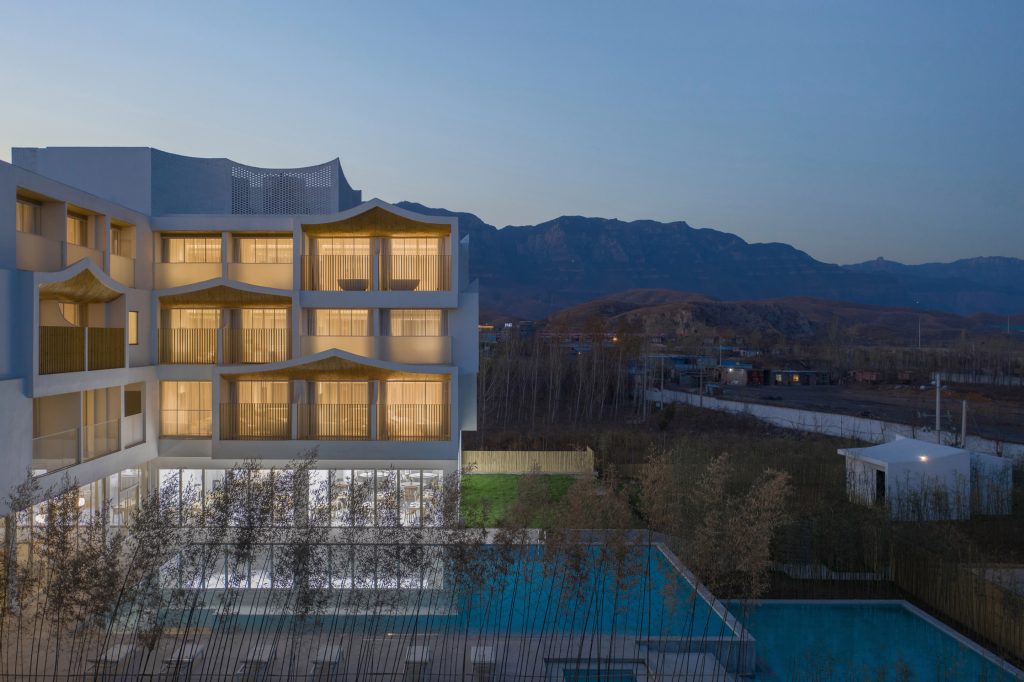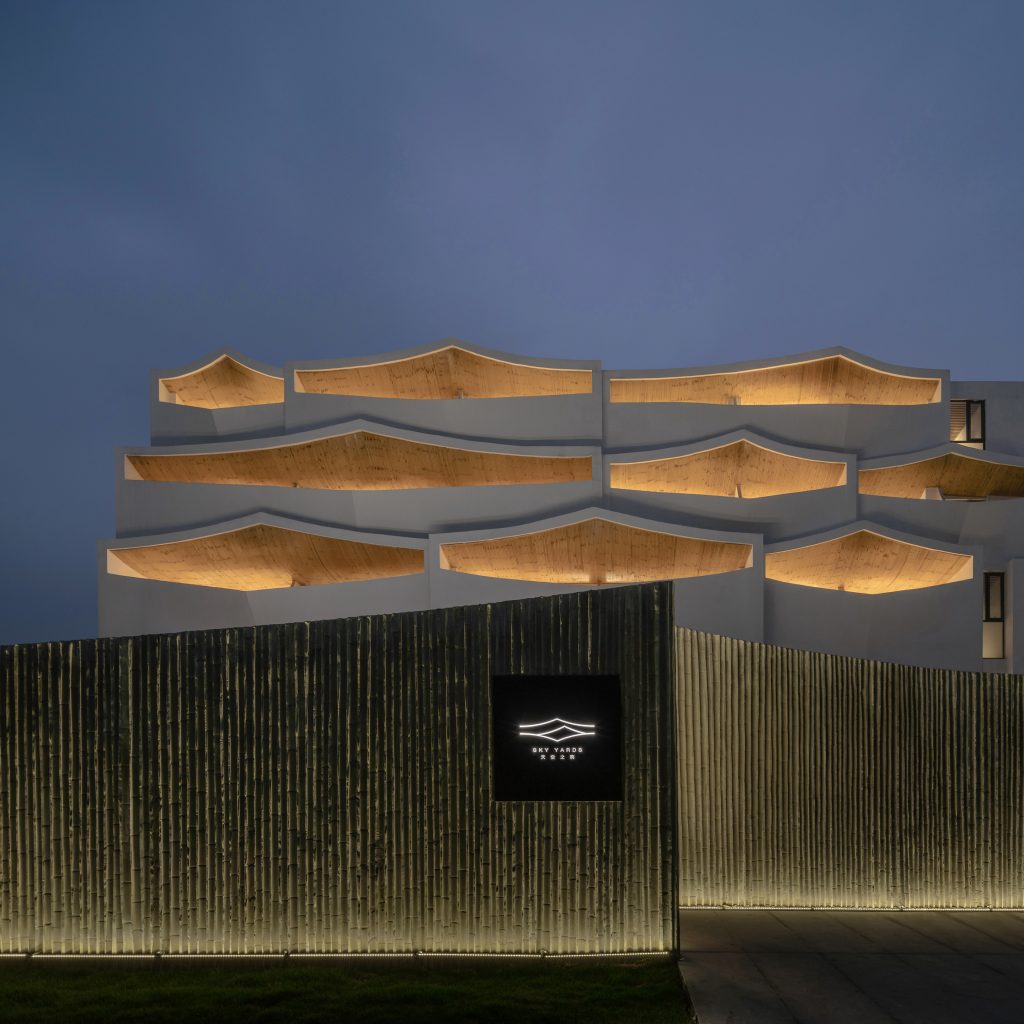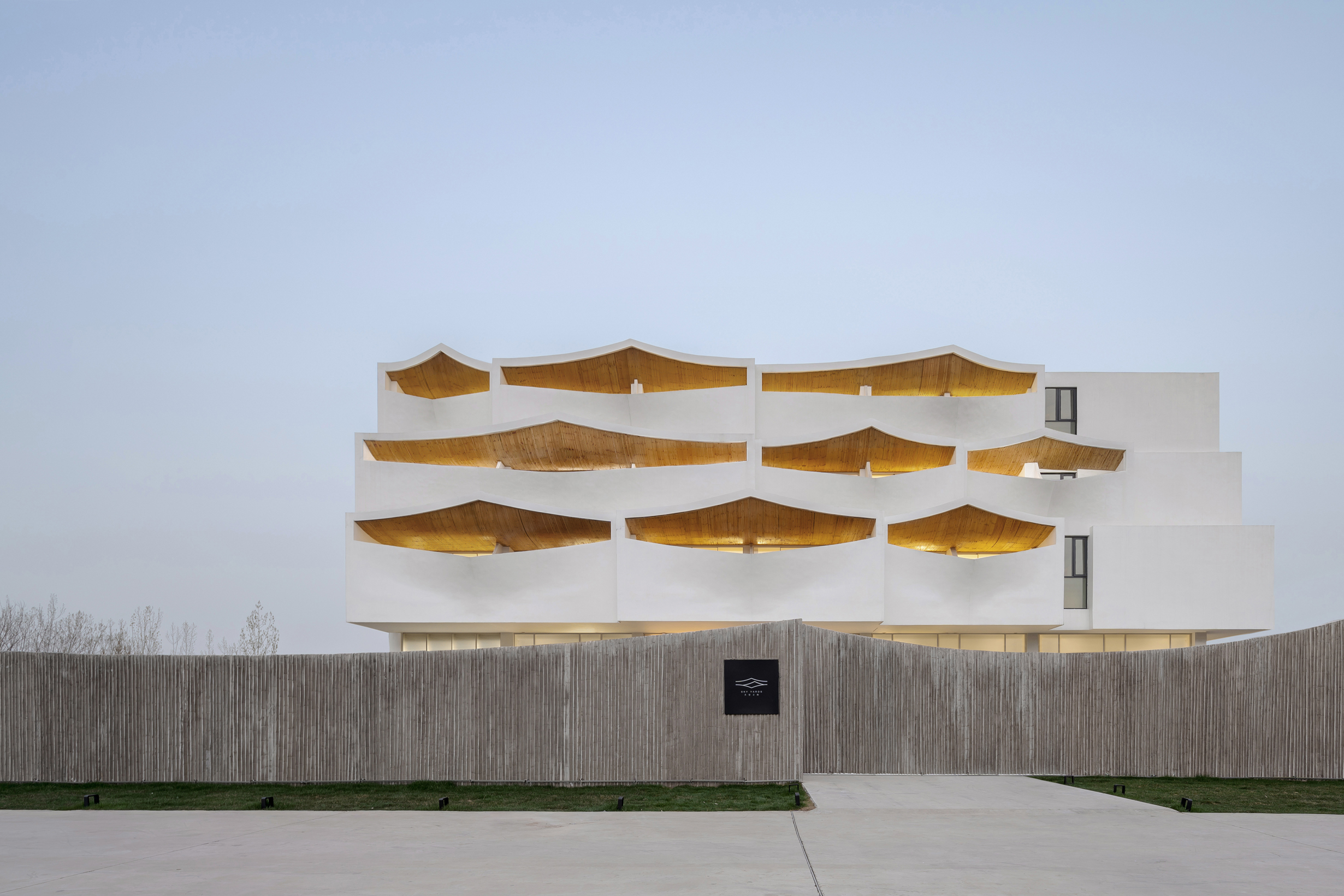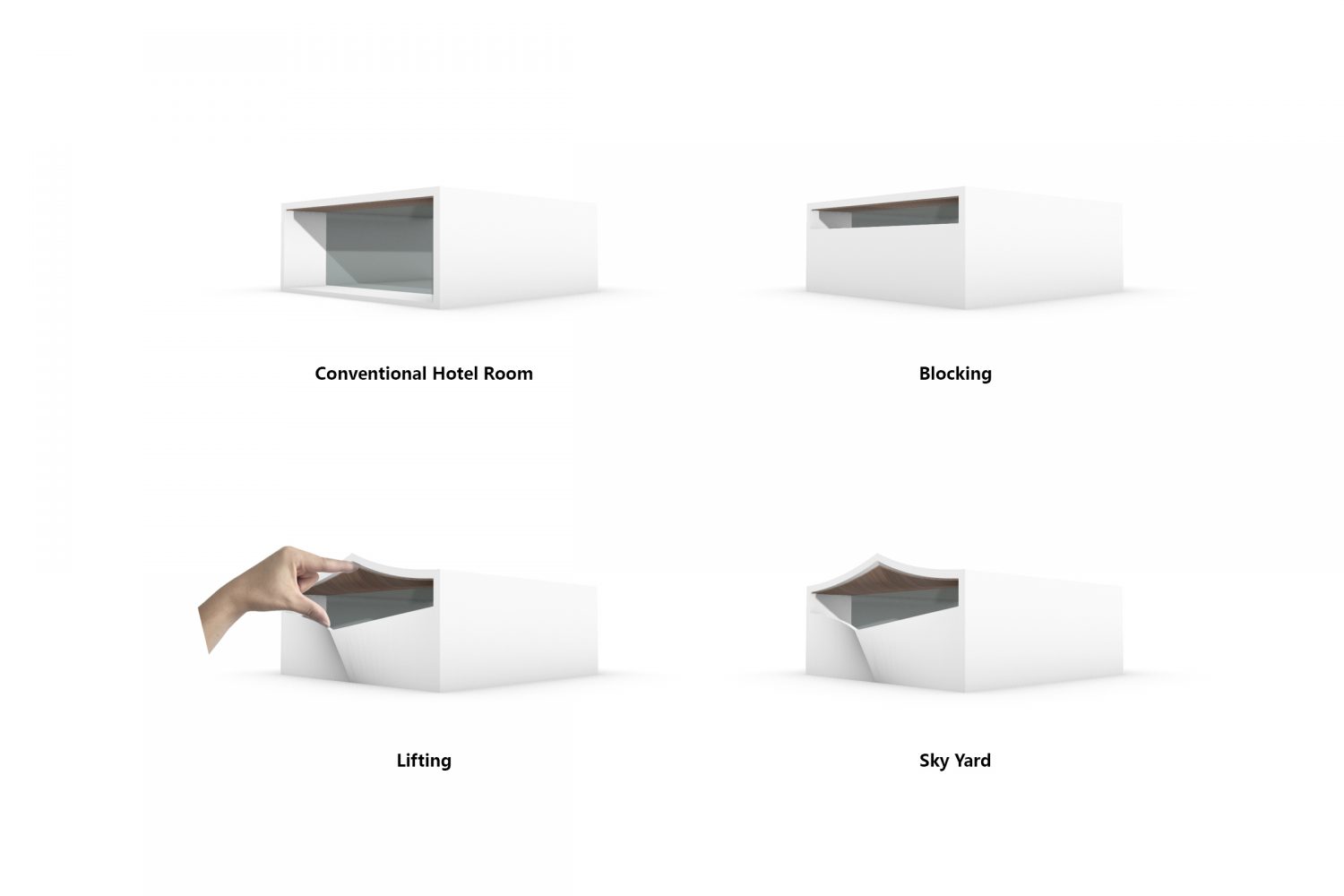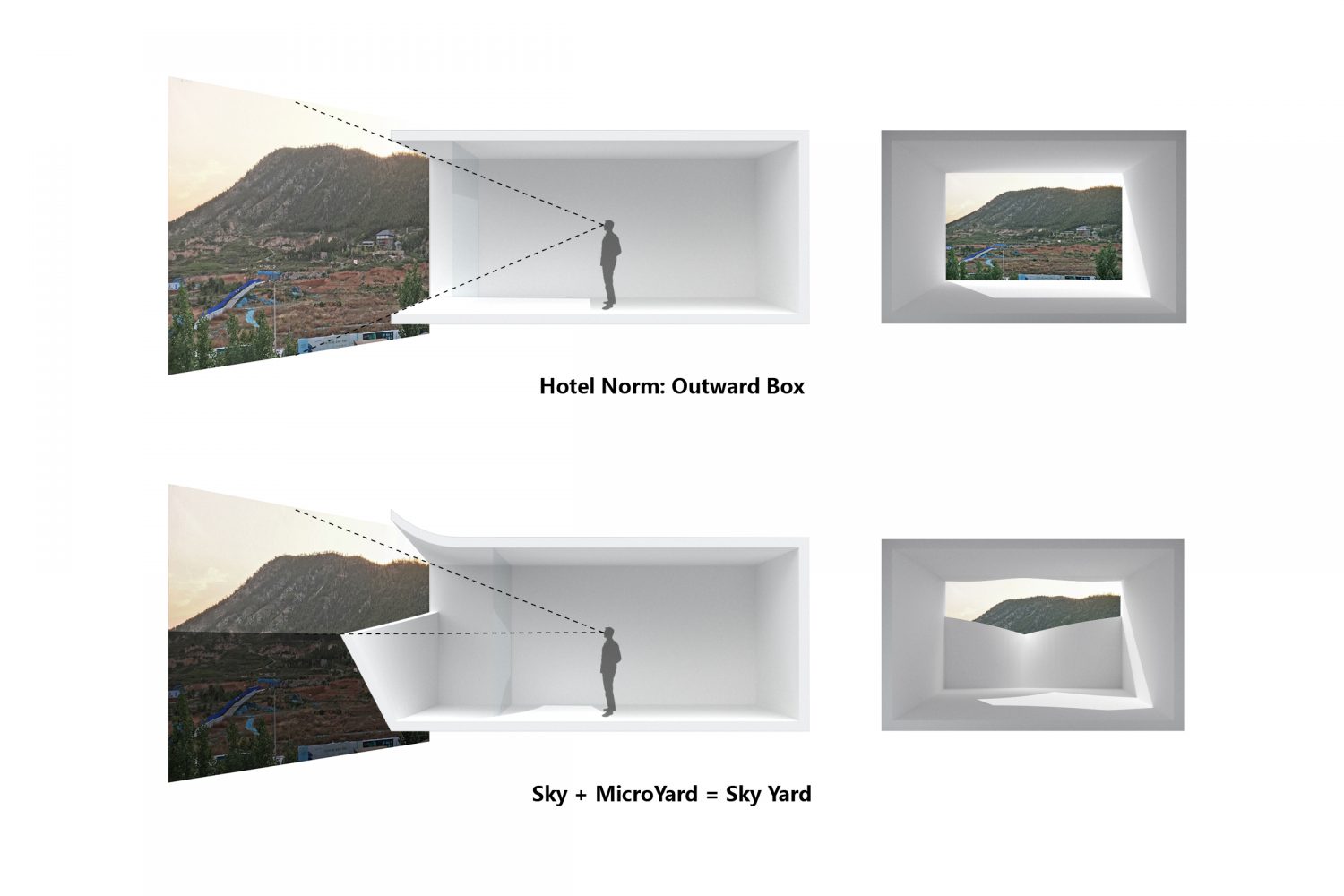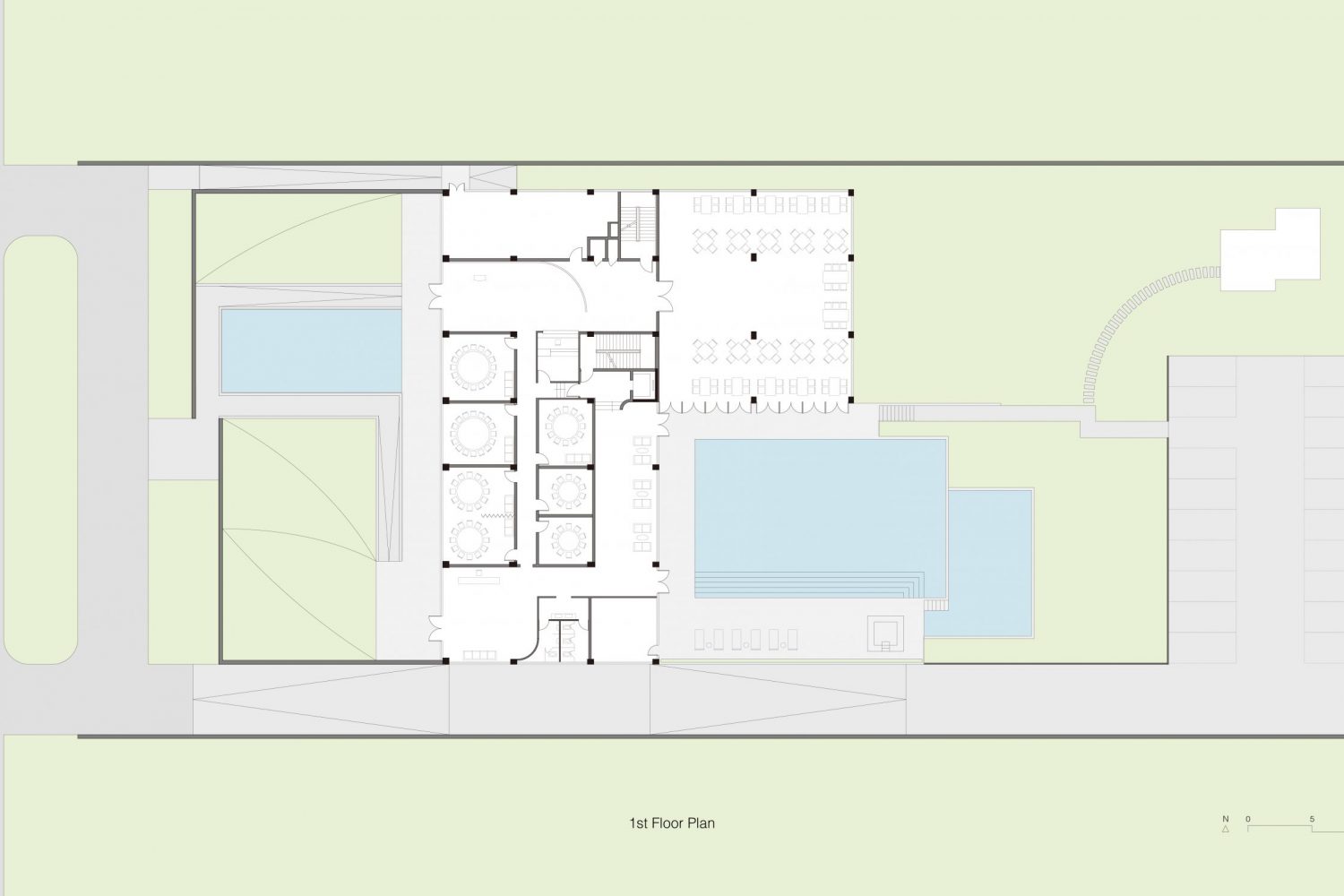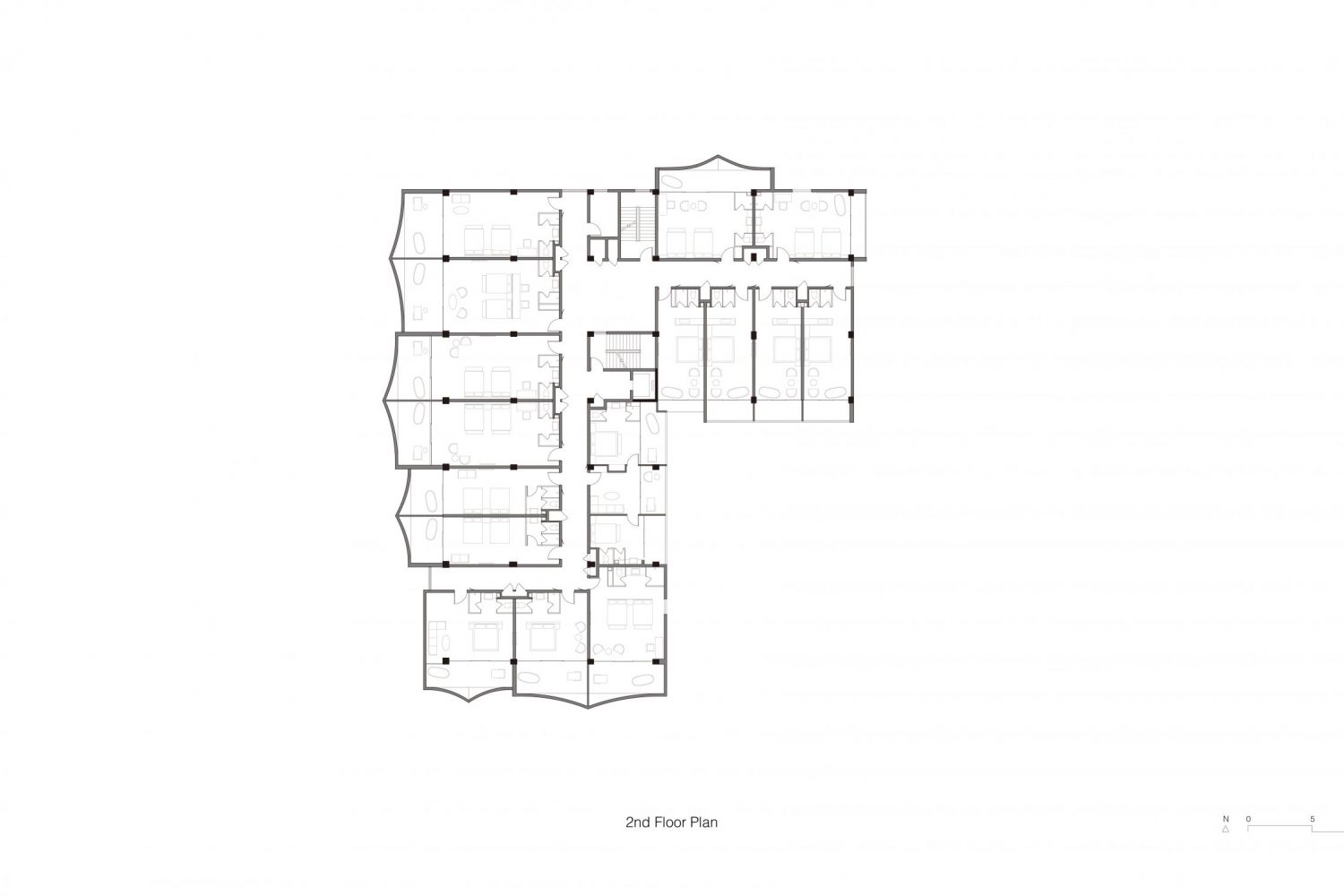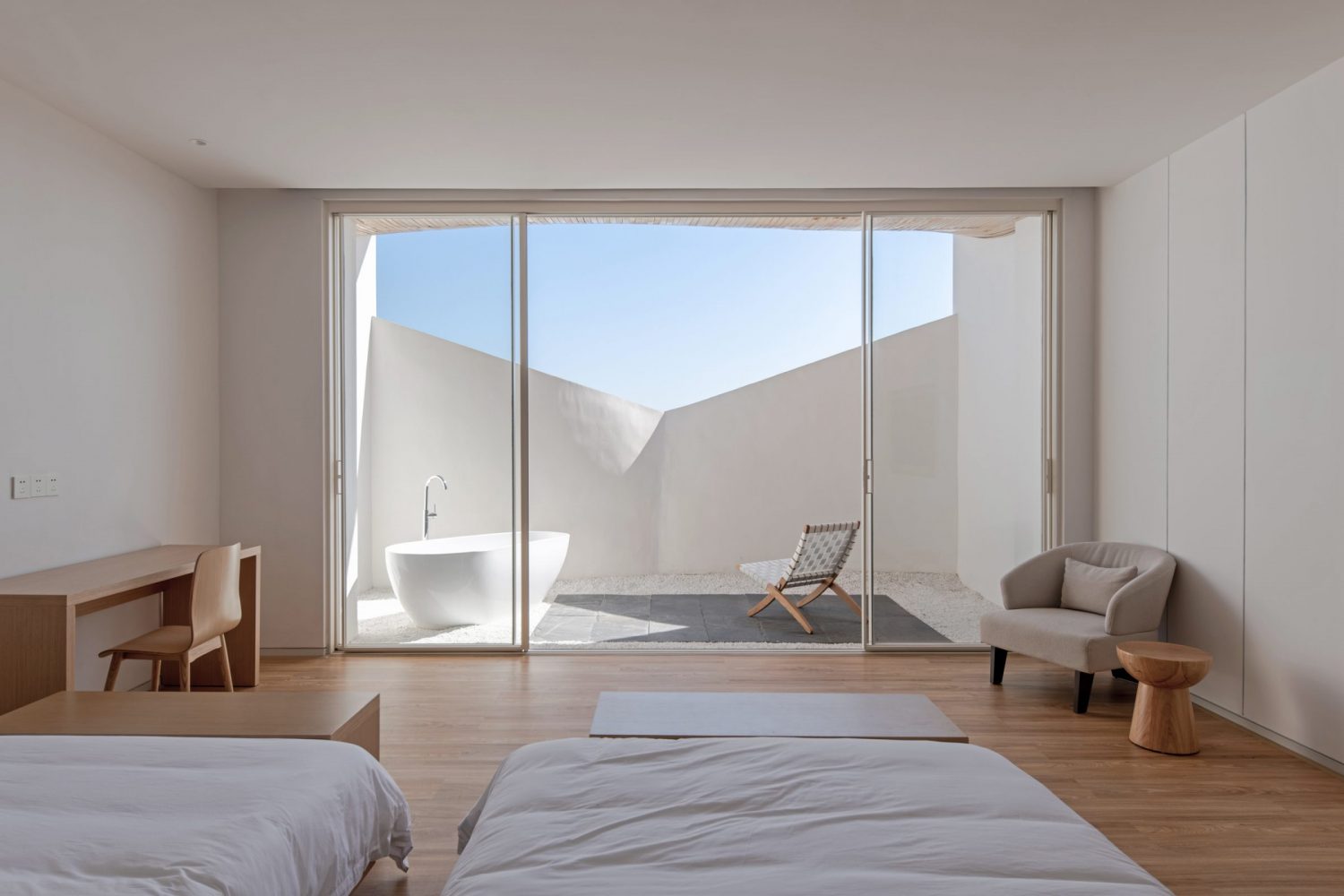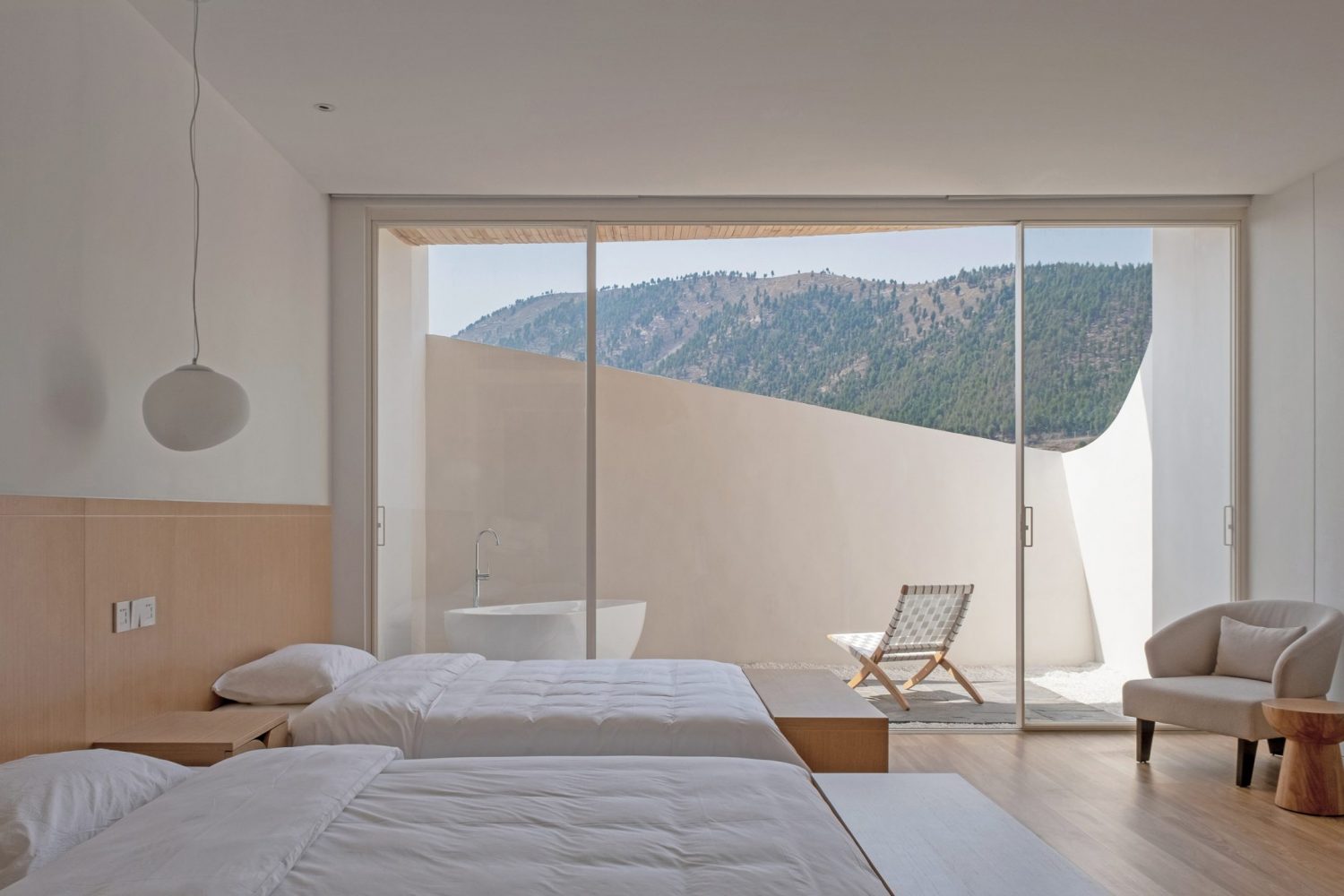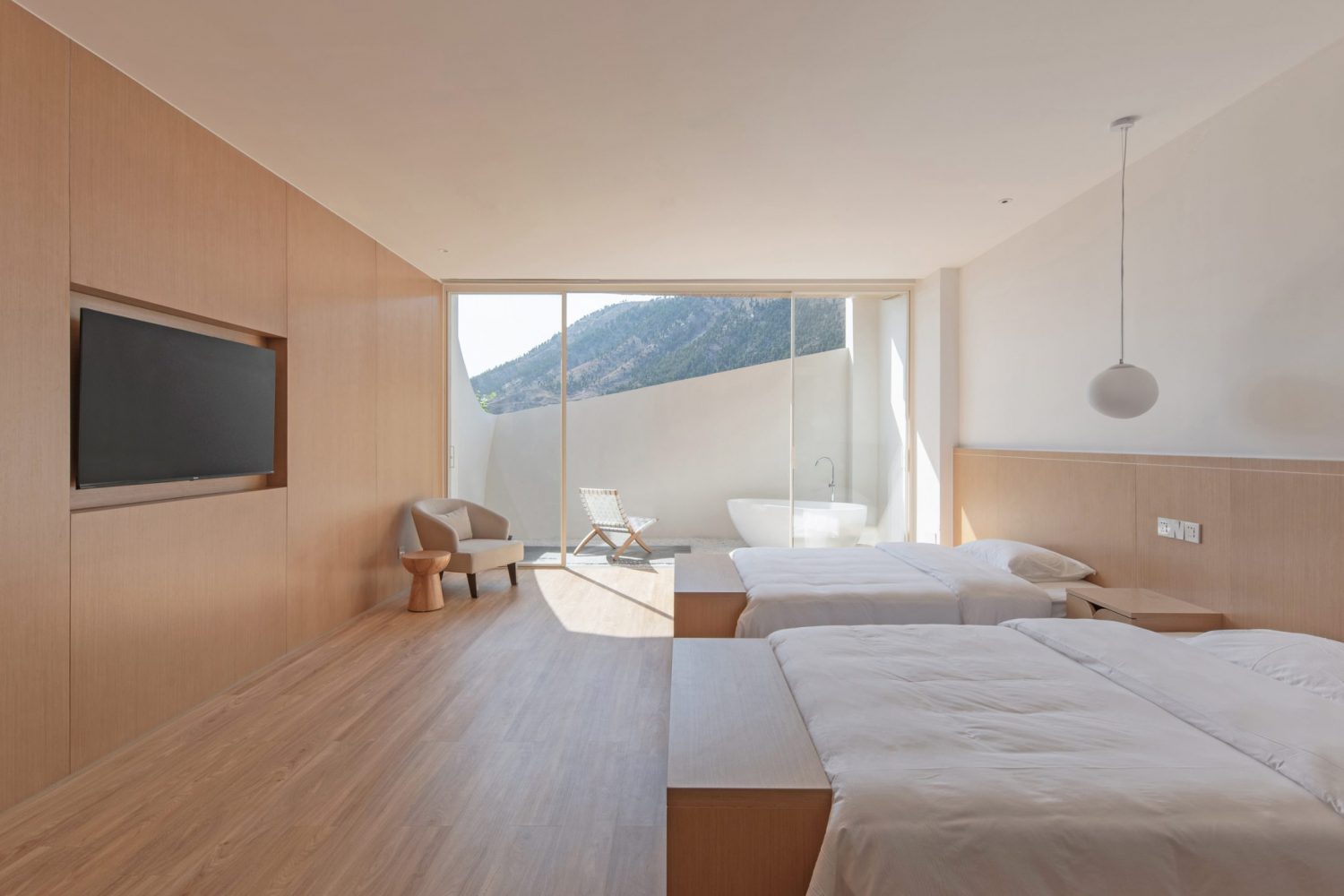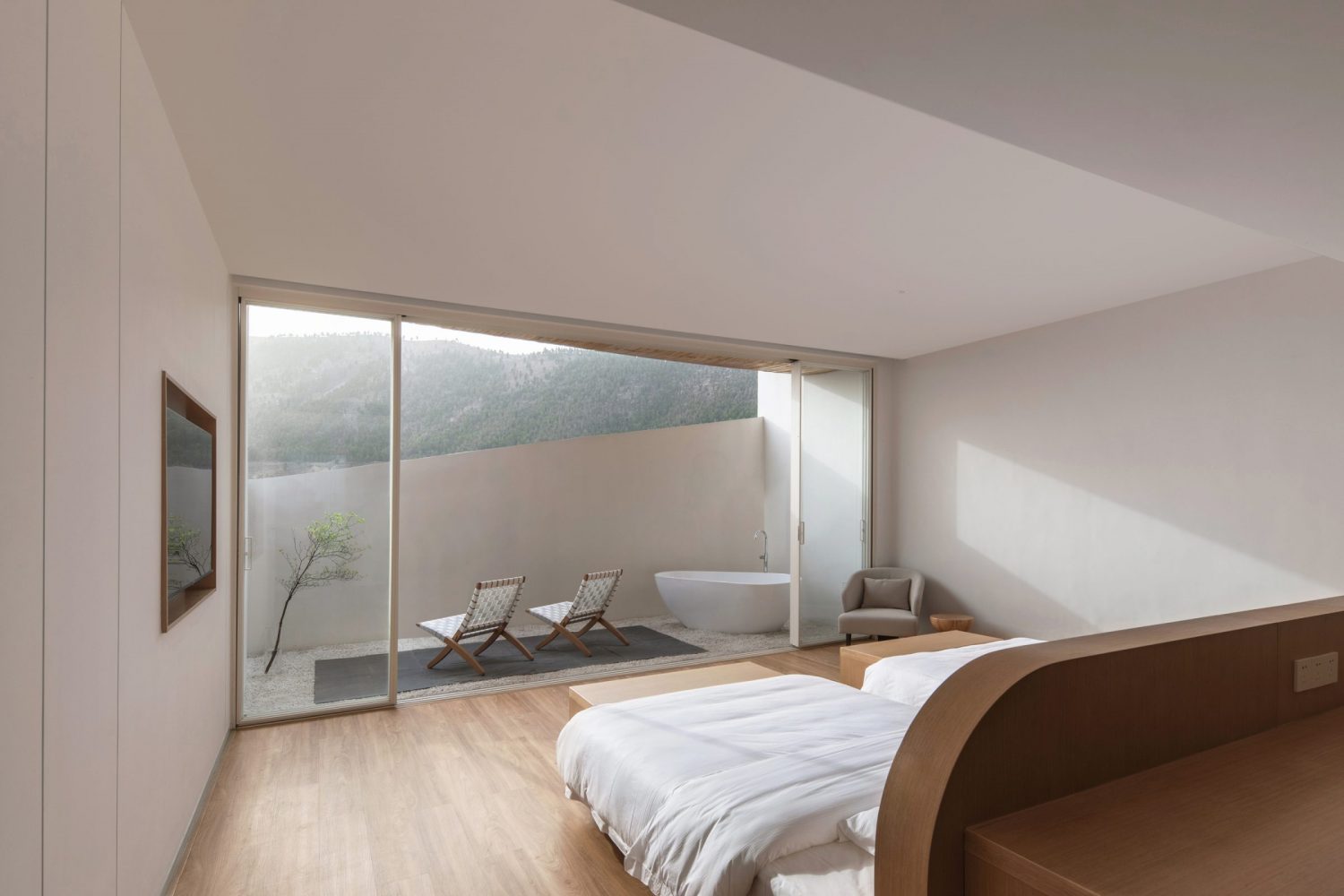TO DEAL WITH THE UNPLEASANT SURROUNDING ENVIRONMENT, DOMAIN ARCHITECTS COMPLETES THIS HOTEL WITH A DIFFERENT DESIGN METHODOLOGY
TEXT: PRATCHAYAPOL LERTWICHA
PHOTO: CHAO ZHANG
(For Thai, press here)
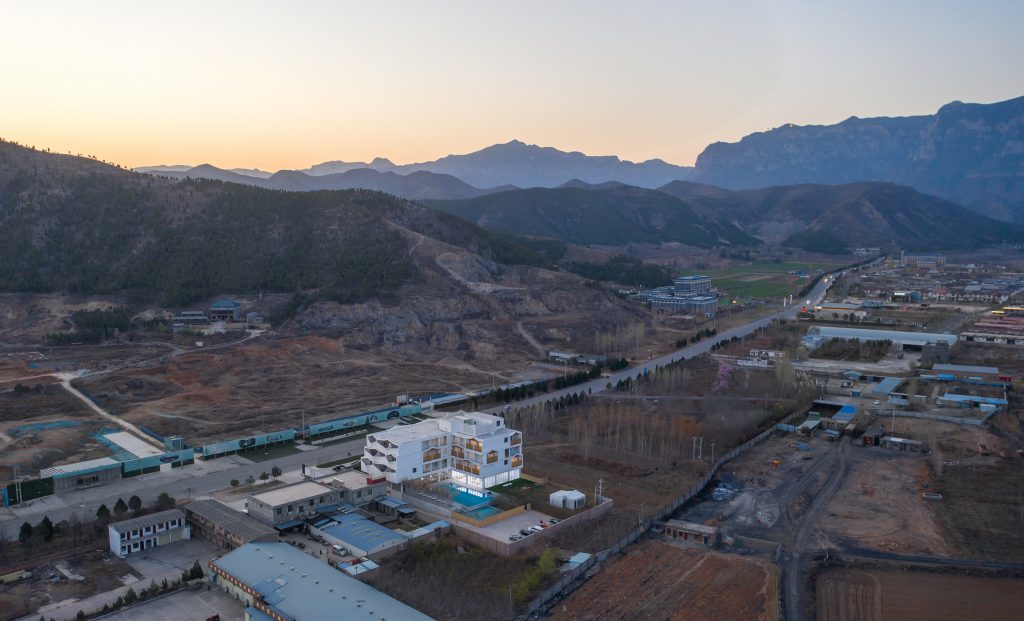
In most cases, hotel rooms are usually designed substantially around taking in the soothing outside view. However, for Sky Yards Hotel in Jiaozuo, China, the approach isn’t exactly the most applicable considering the unpleasant surrounding environment made up of construction sites, industrial factories and deserted plots of lands. The only pleasant detail in sight is the view of the Taihang hotel in the distance. Aware of such limitations, Domain Architects, the design studio assigned for the project came up with a different design methodology to deal with all the challenges.
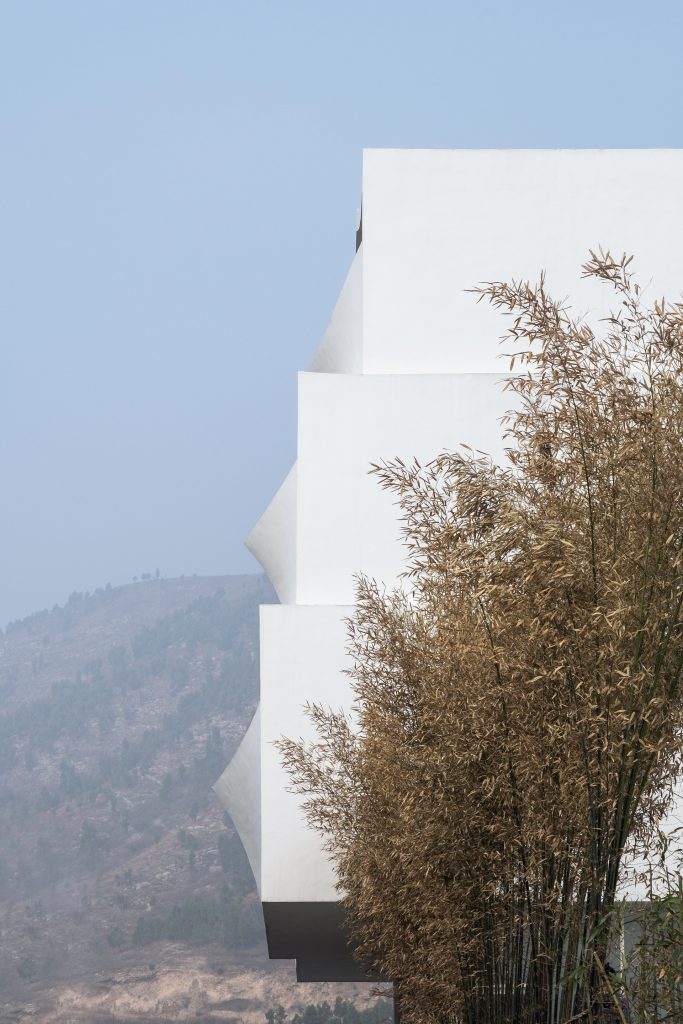
With the view being above the ground level, the architect designs the balcony of each room to have a high dense wall to obstruct the unpleasant view. In the meantime, the rooms open to fully take in the beauty of Taihang Mountain by pushing the ceiling upward and stretching the balcony outward. Simply speaking, it feels almost as if the void between the balcony and the ceiling is being expanded by a giant pair of hands.
CLICK IMAGE TO VIEW IN FULL SIZE
Not only do the balconies bring a perfectly curated view to the rooms, they simultaneously add a unique element to the hotel’s architectural characteristic. From the outside, the elevated ceiling bears a physical resemblance to a mountain range, corresponding with the actual mountain of the surrounding landscape. The contrast between the balcony’s wooden ceiling and the white color of the building makes the overall architecture stand out from other neighboring structures.
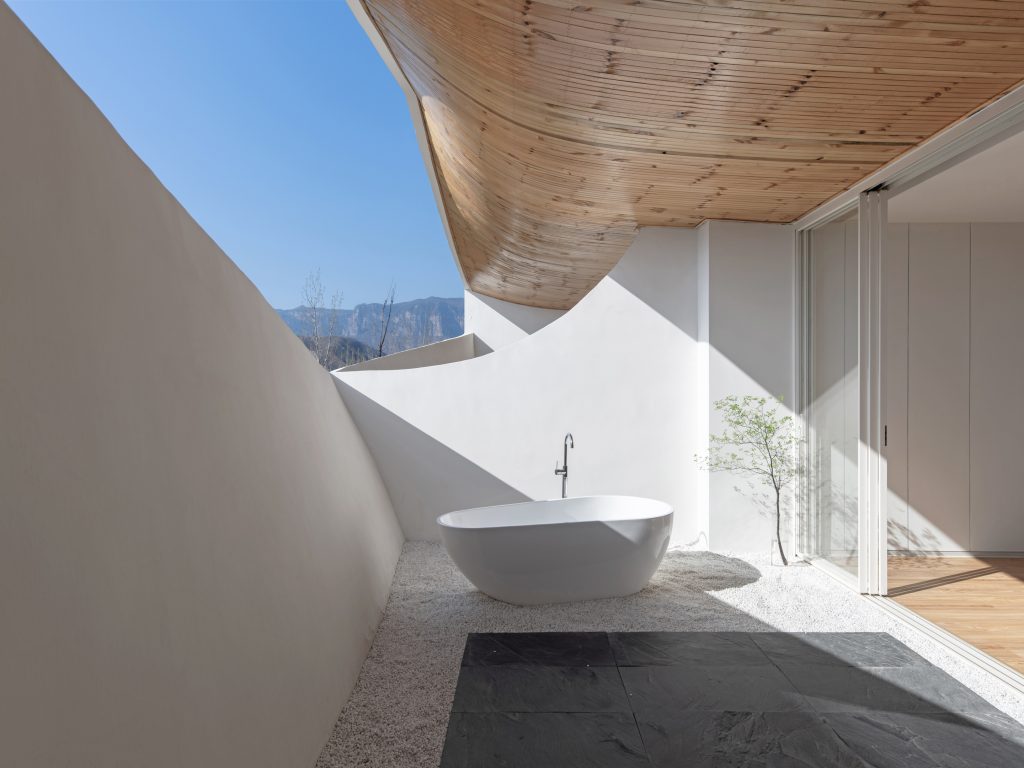
The balcony opens each room to the mountain view while the not-so-pleasant setting is cleverly blocked. The approach is similar to that of the Chinese courtyards that often consist of a series of enclosed and disclosed spaces. Perhaps it’s the way Chinese spatial manipulation is seamlessly incorporated that makes the design so brilliant, for it makes the work more special through the creative reconciliation of what were considered limitations.
